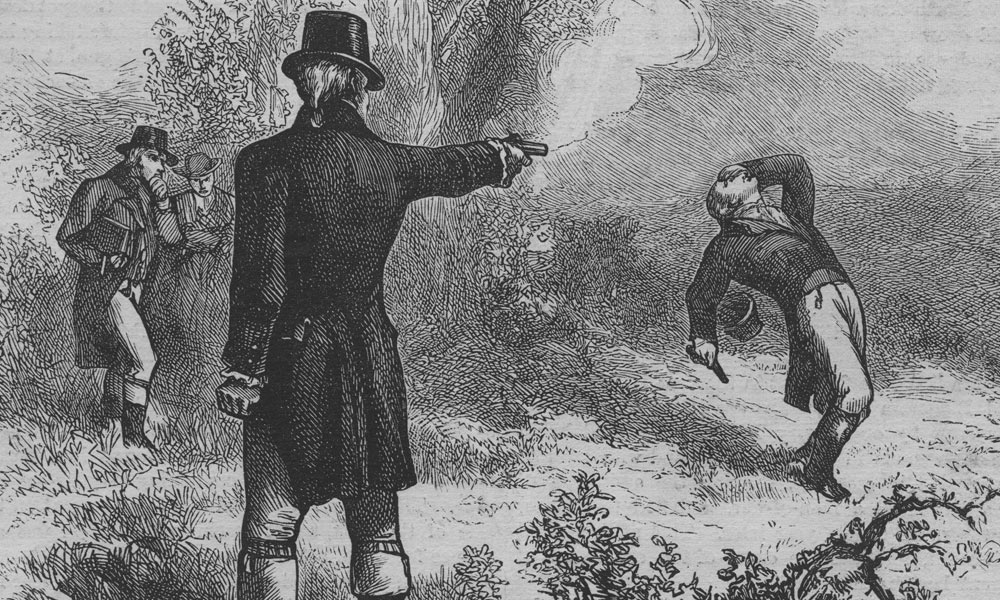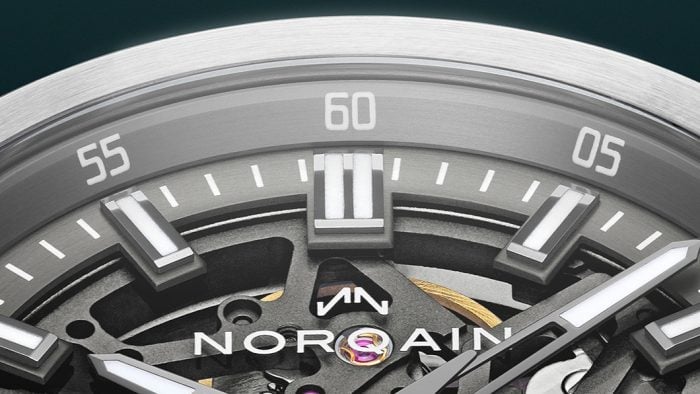American presidents are so mythologized, it does everyone some good to remember that they’re no more or less human than the rest of us. They eat, drink, smoke, walk, talk, swear, trip, yell at their kids (if they have any), and have hobbies. They’re fairly ordinary, for the most part. Biking, tennis, basketball, reading, recreational traveling, and anything else you might see your neighbors doing. But some of them weren’t satisfied with that ordinary, boring shit. They had personal stuff they liked doing and no weird shaped office was going to stop them from doing it.
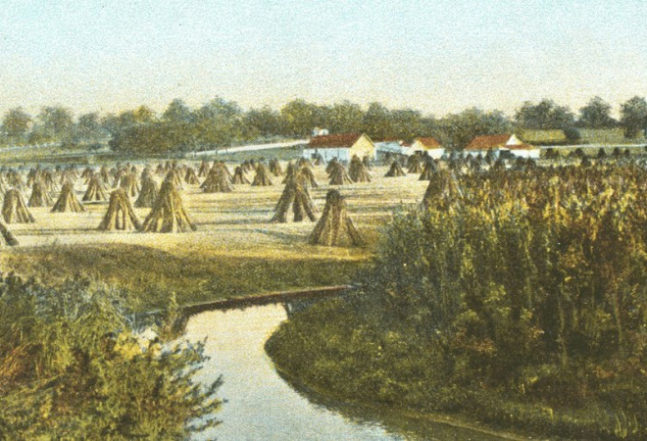
George Washington and Thomas Jefferson – Hemp Farming
Let’s get one thing straight here. Thomas Jefferson’s quote about smoking marijuana on his back porch is a completely unsubstantiated rumor, most likely started by self-righteous stoners trying to tell their parents why it was okay for them to get an iron-on Jefferson portrait for their drug rug.
Part of this entry is to dispel a little of the marijuana/hemp conflations the government started peddling after the Second World War (conveniently, just after their paralyzing need for hempen rope ended). It’s absolutely true that George Washington and Thomas Jefferson grew hemp on their respective estates.
Mount Vernon and Monticello’s websites are more than happy to own up to the founding fathers’ cannabis production. Where they’re less happy to help is when people try to paint the two as stoned hippies. For Washington and Jefferson, it was more about how versatile a crop hemp is. Hemp paper, fabric, and ropes all proved indispensable to enterprising men like the Founding Fathers, so their crop was about utility, not recreation.
Though, in the interest of fairness, those in the know about cannabis agriculture have pointed out that a few of Washington’s notes on hemp point to him attempting to grow a few high THC strains. So people will be dutifully clinging to that speculation until cannabis is inevitably legalized.

John Quincy Adams – Skinny Dipping
John Quincy Adams was no stranger to odd behavior, as he was also the president who approved an expedition to the center of the Earth. One that was extraordinarily similar to the novel of the same name. He believed there was a secret civilization living inside. Mole people, basically.
And while, today, people (like us) find it absurd that someone would take off every bit of clothing and jump in the Potomac, it was extremely common for the time. People would leave their clothes draped over nearby rocks and shrubbery, and it wasn’t uncommon for Adams to be accompanied by his valet, Antoine, his relatives, or even foreign diplomats. If anything, you were weird if you hadn’t gone skinny dipping with the president by the end of Adams’ term.
The only times Adams ran into any kind of resistance to his practice was when he would spend too long in the water. His habit went from a brisk 20-minute bath to a full hour’s workout. His habit waned as he aged, but in 1846, at 78 years old, Adams disrobed once again. That last time, he was joined by an enthusiastic crowd of young men. Not in a sexy way, because that sentence could be easily misconstrued.
Adams’ swimming is only weird now because it’d be hard to imagine someone like Barack Obama or George Bush dropping trou and doing laps in the river. Especially with how many Secret Service agents would have to be doggy paddling along to keep the perimeter.
Also, he kept an alligator in the bathtub in an unfinished section of the White House.
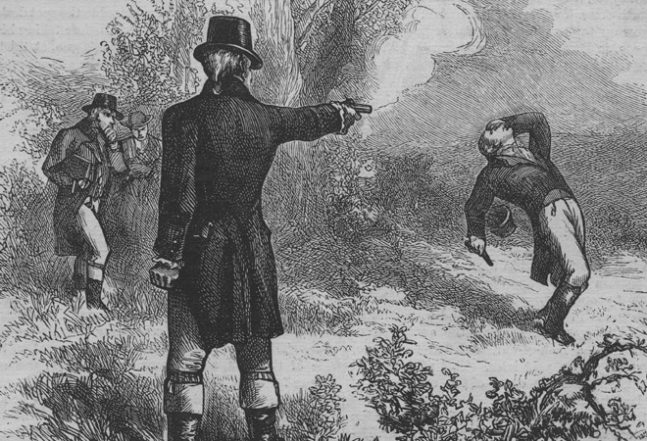
Andrew Jackson – Dueling
Regardless of your political stance, you probably agree with the statement, “I will not literally shoot the president,” and we’d say that goes for past, present, or future. But there were a lot of people trying to shoot Andrew Jackson. In his most famous duel in 1806, long before he became president, he actually killed his opponent, Charles Dickinson. But we’ll get to that in a moment.
Part of the reason Jackson was in so many duels was his wife. She was a divorcee at a time when it was scandalous to be one. Her previous husband was an abusive dick, so she was completely in the right, but that wasn’t something people considered when talking about these things. Mostly what they focused on was how Rachel Jackson became Rachel Jackson before her previous husband finalized the divorce. Which she didn’t know. But again, people weren’t super concerned with the woman’s story in such matters.
Charles Dickinson was one such accuser, calling Rachel a bigamist and Jackson a coward and scoundrel, Dickinson’s fate was set. On May 30, 1806, the two met to settle their quarrel, evidently once and for all. Dickinson got off the first shot and caught Jackson in the chest, next to his heart (that bullet would never be removed). Jackson grabbed his chest, applied pressure to the wound, and stayed standing. Dickinson, surprised, shouted the immortal words, “My God, have I missed him?” No, Charles, you didn’t, you just didn’t shoot him with a big enough bullet.
Depending on the account you read, Jackson was either heroic and followed protocol to the letter, or breached etiquette completely and shot Dickinson illegally. Either way, Jackson’s pistol didn’t fire when he pulled the trigger the first time, so he recocked and tried again. That time it worked. Jackson also topped Dickinson’s line, somehow, when he responded to his doctor, who couldn’t believe Jackson stayed on his feet. To that, Jackson said, “I would have stood up long enough to kill him if he had put a bullet in my brain.”
Dickinson was the only man Jackson killed, but the future president was reportedly in more than a hundred duels. That’s a hell of a lot more times than we want to be looking down the barrel of a gun.
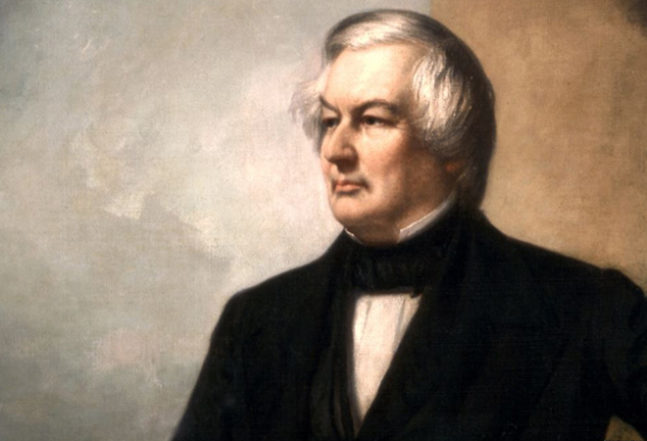
Millard Fillmore – Firefighter
What’s crazy about Millard Fillmore was how quickly he sprinted out of the White House to fight a fire at the Library of Congress.
On the morning of December 24, 1851, Fillmore was eating breakfast with his family when he heard Washington D.C. fire chiefs outside shouting about a fire at the Library. The way it’s told, Fillmore joined the fight without a moment’s hesitation, presumably leaving his forkful of food cartoonishly hovering where his mouth used to be. Fillmore, members of his cabinet, and a handful of congressmen worked with the fire brigade and the bucket lines to put out the fire.
But this also wasn’t a fire where an ashtray caught a table on fire. This fire consumed 35,000 books from the collection and the fight continued for more than 24 hours, not ending until noon on Christmas Day. The entire time, Fillmore was supposedly on the front lines, giving orders, organizing the effort, and personally commanding the bucket line formed by the marines from the nearby naval yard.
After the fire was out, Fillmore pretty much vowed to take personal revenge on the fire. He pushed legislation through Congress that funded the rebuilding effort, while also getting enough money to establish the Presidential White House Library. But since Congress wasn’t moving fast enough, he spent $65 of his own money ($1,945 in today’s cash) to get the White House library moving. If anyone was going to be allowed to burn down the collected knowledge of the United States, it was going to be him.
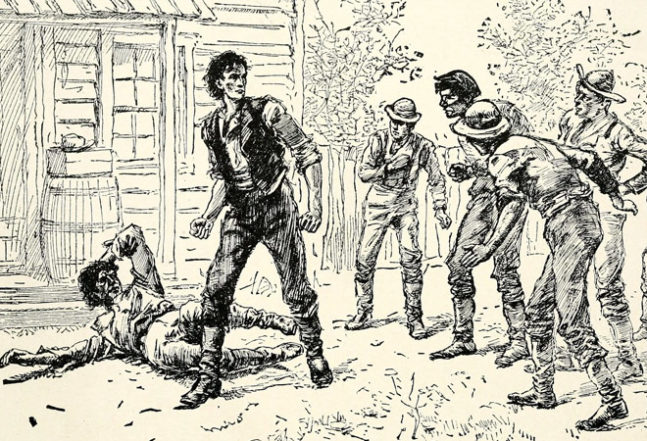
Abraham Lincoln – Wrestling
If there’s one president people have a bright, shining image of in their minds, it’s Abraham Lincoln. This is the guy who kept the country from breaking up, freed the slaves, and died for the cause. There’s almost nothing that could break that reputation. And we’re not going to try to. We’re only going to say that maybe Honest Abe deserves a bit more hardcore of a rep than he currently has.
Lincoln, like Jackson’s dueling, has one particular story that embodies the rest of his wrestling career. This match took place in 1831 in New Salem, Illinois, when Lincoln was roughly 22, against Jack Armstrong, the leader of a small gang called The Clary’s Grove Boys. Whatever the inciting incident for this match was has been lost to history, but we can chalk it up, generally, to a group of boys not taking an immediate liking to a newcomer. Especially when that newcomer’s employer, general store owner Denton Offut, was bragging to the entire town that no one could beat up his new shop hand.
The most striking thing about this match, and probably the reason it’s the match that’s lived one through the years, was the height difference. Armstrong was a reasonably tall person for his time, at roughly 5’6” to 5’8”. Lincoln was 6’4”. That’s, at a minimum, an eight inch difference. What’s more, Lincoln had grown up with hard labor from the moment he could work, making the future president 76 inches of solid muscle.
Accounts consistently state Armstrong fouled Lincoln when a Lincoln victory started becoming obvious. When The Clary Grove Boys started advancing on Lincoln, he offered to fight them one by one if that’s what they wanted. Instead, Armstrong declared the match a draw and he and Lincoln shook hands, something that built mutual respect in both young men.
Wrestling followed Lincoln throughout his political career, with some using it in a poor attempt to slander him, while others saw it as a mark of a well-rounded candidate with personal courage, strength, and integrity. Which seems more accurate.

Teddy Roosevelt – Martial Arts Much Tougher Than the Myths
There probably isn’t anything we could tell you about Teddy Roosevelt that will surprise you. He got shot then gave a campaign speech. He was very much into killing animals. He explored the Amazon. He loved his wife. You may even know he was a boxer. But you might not know that Roosevelt’s feelings toward boxing, and martial arts in general, were less of a hobby and more of a life long obsession.
His love started as self-preservation, as the toughest, manliest president this country’s ever seen was weak and asthmatic as a child. In the early years, if he was thrown into a situation that required some kind of masculine toughness, he often came out the worse for wear. At 14, Roosevelt started boxing. He wasn’t particularly good at the beginning, admitting himself that it was two or three years before there was any noticeable improvement. But his dogged determination were legendary and earned him a small following in his college years.
That determination followed him through every bit of his martial arts training. This attitude was on best display during a bout with Charley Hanks, a guy roughly his size, but with a longer reach. Roosevelt took a beating, but went into every round with “undiminished determination.” Even after his face was beaten bloody and his defeat was obvious, Roosevelt was ready to throw himself as Hanks.
Boxing fell off a bit when his political career started ramping up, finally giving it up after a brutal fight that saw Roosevelt and his opponent more roughed up than usual. But he maintained a rigorous regimen of grappling training no matter what, even getting in arguments with New York’s Comptroller about “proper Gubernatorial amusement.” Basically, Roosevelt was the first MMA president and was always willing to get in a fight.
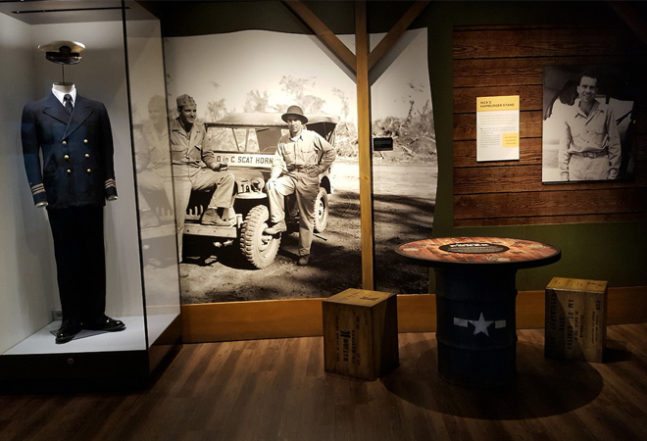
Richard Nixon – Poker
You’ve almost definitely heard the moniker “Tricky Dick.” The origin of the nickname is debated somewhat, with some thinking it’s a smear tactic from the Kennedy campaign, while others attribute it to the Watergate scandal. All we know is that Nixon truly earned it as an ensign in the Navy in the 1940s, when he used his poker talents, specifically in five-card stud, to win thousands of dollars away from his fellow sailors. Not in a malicious way. As far as we could tell, the games were as fair and above board as the average poker night among friends, and it’s not like he was hiding aces up his sleeves. He was just really good at reading a table, knew what chances to take, and kept his head about him as he played.
The sailors weren’t playing huge hands either. Bets were, for the most part, capped at $10. It was a lot more money back then, but even after it’s adjusted for inflation, it doesn’t compare to the $500 tables in Vegas that routinely claim entire life savings. Their smaller games meant Nixon slowly accumulated wealth over his two years in the Navy, consistently sending money back home to California. There’s no way to know exactly how much Nixon won, but fellow naval officer James Stewart estimated Nixon sent $6,000 to $7,000 to his family.
These winnings also gave him the financial capital he needed to start his political career. He used about $5,000 on his first congressional campaign in 1946, which he won. From there, he used the skills he learned at the poker table—like being able to read your opponents, know when to bet big and when to bow out gracefully, or understanding when someone is vulnerable to attack—to get himself all the way up to the Oval Office.
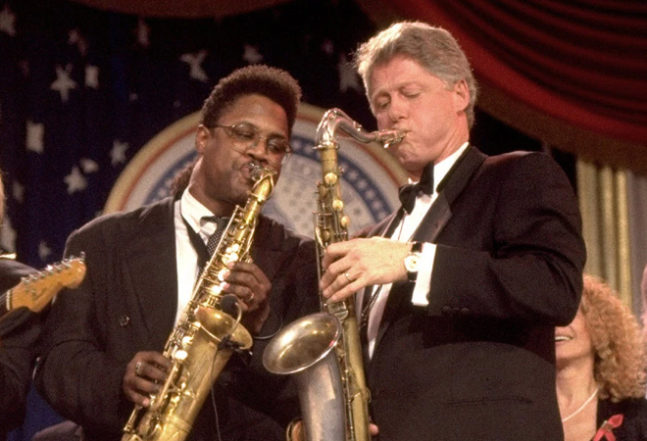
Bill Clinton – Saxophonist
It’s been a little while since The Arsenio Hall Show was on the air and there’s almost no way to tell how many of you were avid watchers. As a result, we could be telling you about something you saw live and have known your entire lives. You could have also seen Clinton’s cover of “Heartbreak Hotel” one of the many times it’s made the rounds on the Internet over the past two and a half decades.
What you may not know, especially since we live in a time when the sitting president is a frequent guest of Jon Stewart and a lot of people only know about the appearance in retrospect, is how revolutionary it was to see a politician in that context. Previously, politicians appeared on serious news programs to talk about their serious bid for the Presidency. They wouldn’t think of touching a variety/late night program with a ten and a half foot pole. But Bill Clinton revolutionized that image with 120 seconds of sax.
There’s not much that we could find that talks about his history with the instrument, but a thread on Quora has a few breakdowns of musical style and complexity from people who’d know (if you believe what people claim on the internet). According to them, Clinton was about as good a saxophone player as a well-practiced, naturally talented high school senior. Not professional level, but enough that people would be comfortable with him filling in on their saxophonist’s sick days. If nothing else, he was good enough that his playing didn’t become a national embarrassment, and probably continued well into his days in the White House. How else was he supposed to relieve the stress of the office?
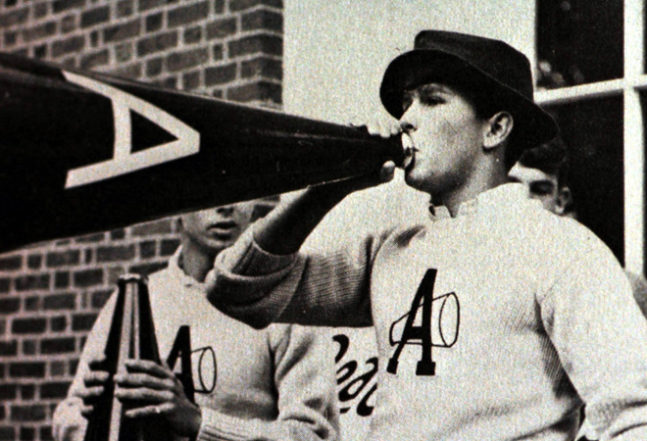
George W. Bush – Cheerleader
You wouldn’t think it, but, back in high school or college, the kid who spent all their time with their nose in their political science textbook and bored everyone with questions about democratic republics and current events was far less likely to end up as president as the guy who made a well-meaning fool of himself as a cheerleader. That second guy was George W. Bush during his time at Phillips Academy in Andover, Massachusetts. We’ve never heard of the first guy.
Somehow, Bush became head cheerleader at the academy and, as a charismatic, quick-witted young man found the position played to his natural skillset. He and his fellow cheerleaders starting putting on humorous skits and pep talks during rallies and sporting events. They were apparently so successful the dean of students, G. Grenville Benedict, was concerned they were unintentionally drawing attention from the football team to the cheerleading squad. Benedict relented soon after, as his request had prompted a student editorial entitled “Bush’s Antics” in the school newspaper. Benedict even saw the value in what Bush was doing, as he took the next head cheerleader aside and told him Bush had raised school spirits to the highest they’d been since 1930.
Bush also started a stickball league at the school, flying directly in the face of the school’s more serious athletic traditions, and apparently he did it all on the spot. The year he ran it, it was the most popular athletic pursuit at the school, entirely student run, and full of playfully subversive high school antics. And damned if he doesn’t keep endearing himself to people.

Barack Obama – Comic Book Collector
As much as we love them and want to portray comic books as a more mainstream hobby, they still hold on to that 1980s nerdy stigma. Which makes Obama’s comic book obsession all the weirder. How could a guy who made the White House Correspondents Dinner worth watching also love superheroes?
Apparently Obama’s a long time fan of the genre though. He admitted in an email that he grew up loving the medium, with particular emphasis on Spider-Man and Conan the Barbarian. While not the two we would have expected from the Commander in Chief, we can’t fault his choices. Both are solid mainstays in comics and are series any self-respecting reader should be happy to own.
Speaking of Spider-Man, he was one of Obama’s many, many team ups. He appeared in Marvel and DC books, meeting Spider-Man, the X-Men, Avengers, Superman, Amanda Waller, the Suicide Squad, and a thousand other ancillary characters. He’s appeared in far more comics than any reasonable person can count, so we’re not going to try. Just know that you’re more likely to see Obama than the character whose series you’re actually reading.

